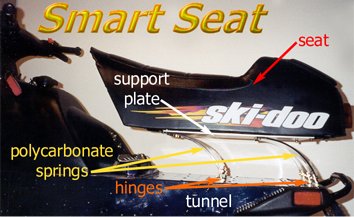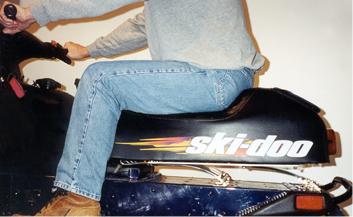|
Site map
Home
Reviews of other ER books
Contact me
Submit a question
Submit an ER story
Have an interesting ER story?
If I use it, I'll give you a free book.
Question & Answer pages
For more Q & A, see my
www.er-doctor.com site
ER crossword puzzle
Interview with Dr.
Pezzi
ER-MCAT
Test your
knowledge of ER terms by solving my ER crossword puzzle that was featured in the
Prudential Securities Healthcare Group 2002 calendar. Or take the ER-MCAT
to see if you have what it takes to be an ER physician.
My favorite
ER memories
Pictures of me
Biography
My personal pages
Including my:
Medical Inventions page
Misc. Inventions page
Snowmobile page
Accelerometer page
Smart Seat page
"If I had a hammer" page
"Sheds I've Built" page
Dremel bit holders page

ER
stuff
A mold to make ER cookies and ER Jell-O! Or
how about a glow-in-the-dark chest x-ray?
My
postings on ER forums
ER links
Bad news about Accutane
Amy's Corner
Amy reviews ER computer games
Tell a friend about this page by e-mail

Recent magazine
interviews

Some of my other sites
| |

Bumpy snowmobile trails are a fact of life for many snowmobilers.
Why are bumps so objectionable?
- Bumps reduce enjoyment. You certainly don't need to be told this
if you've ever gone on a 100-mile ride on trails covered with teeth-chattering
moguls.
- Bumps can cause vertebral (back) fractures.
- Bumps increase rider fatigue, and therefore increase the chance of an
accident.
Snowmobile manufacturers have attempted to isolate the rider from bumps
by offering long-travel suspensions and thicker seats. These measures
have helped, but ride quality is still far from perfect. Why is this
true?
- There are many problems with long-travel suspensions (LTS), such as:
- The full range of motion (ROM) is rarely achieved. Understandably,
manufacturers need to make springs stiff enough so there is a reserve of
compression for the big bumps. However, when smaller bumps are encountered
only a fraction of the ROM is obtained.
- The ROM is usually considerably less than what the manufacturers claim.
In an attempt to impress consumers, they often quote the distance that
some part travels in its arc of compression. The only figure that
matters is the vertical compression that the entire suspension can achieve;
this is usually 3 to 5 inches less than the inflated numbers that manufacturers
quote in their literature.
- The reaction characteristics of LTS actually help create more bumps
and increase the size of existing bumps.
-
The primary problem with seats is that their ROM in comparison to the thickness
of the seat is very poor. What good is 8 inches of foam rubber if
it compresses only a fraction of an inch as you traverse a bump?
Obviously, not much. Take a look at the photograph below on the right
that reveals how little the seat
 compresses in response to the weight of
the rider and the force of hitting a moderate "up" bump. What's an up
bump? It's an elevation that imparts an upward acceleration to the vehicle
frame. Conversely, a down bump is a depression that imparts a downward
acceleration. As poor as foam rubber seats are in responding to up
bumps, they're even worse in responding to down bumps because their
negligible compression doesn't permit much ROM in expansion. compresses in response to the weight of
the rider and the force of hitting a moderate "up" bump. What's an up
bump? It's an elevation that imparts an upward acceleration to the vehicle
frame. Conversely, a down bump is a depression that imparts a downward
acceleration. As poor as foam rubber seats are in responding to up
bumps, they're even worse in responding to down bumps because their
negligible compression doesn't permit much ROM in expansion.
 
The Smart Seat substantially improves ride quality by offering 5.8 inches of
vertical travel. While seats typically have about 8 inches of foam rubber,
it is impossible to fully compress the seat to achieve that ROM. In fact,
your vertebrae will fracture long before full compression is achieved.
Therefore, in terms of ROM, seats may as well just be small springs sitting on
top of bricks. While it's true that a certain amount of padding is
necessary to distribute body weight, this can be accomplished by using a few
inches of foam rubber. Thus, most of the vertical space taken up by
standard seat cushioning material is wasted. In contrast, the Smart Seat
permits almost 6 inches of vertical motion because it is designed to almost
fully collapse so that the maximum ROM is achieved.
The Smart Seat consists of three main components: (1) a support plate (which
is not required if the seat itself is sufficiently sturdy) made of aluminum
plate, (2) curved Smart Springs molded from polycarbonate (Lexan®), and
(3) hinges that attach the bottom of the springs to the tunnel. Lexan®
is an incredibly tough plastic that is used in a number of applications such as
shatterproof windows and bulletproof windows and barriers.
 The standard
Smart Seat is designed to respond to both up bumps and down
bumps. When the rider sits on the seat, the springs compress about halfway
(slightly above the position shown in the above photograph on the right).
From that mid-position the springs can either further compress in response to an
up bump or further expand in response to a down bump. The effect of this
is that the Smart Seat offers a much smoother ride by effectively filling in the
down bump depressions and clipping the up bump elevations as shown in the
adjacent diagram. The standard
Smart Seat is designed to respond to both up bumps and down
bumps. When the rider sits on the seat, the springs compress about halfway
(slightly above the position shown in the above photograph on the right).
From that mid-position the springs can either further compress in response to an
up bump or further expand in response to a down bump. The effect of this
is that the Smart Seat offers a much smoother ride by effectively filling in the
down bump depressions and clipping the up bump elevations as shown in the
adjacent diagram.
Can the Smart Seat be customized? Yes!
- Some riders may prefer to limit the elevation in ride height by choosing Smart
Springs that fully collapse once the rider’s weight is imposed upon
the seat. Such a Smart Seat responds only to down bumps but
still offers a remarkable increase in ride quality.
- The Smart Seat can be adapted for use on personal watercraft, motorcycles,
ATVs, tractors, and other vehicles.
Have any questions? Contact me via this page:
www.myspamsponge.com/doctor.php
Back to the main page of
Dr. Kevin Pezzi's personal web site
● ● ● ● ● ● ● ● ● ● ● ● ● ● ● ● ● ●
● ● ● ● ● ● ● ● ● ● ● ● ● ● ● ● ● ● ●
You will have sex about 10,000 times during
your life.
Doesn't it make sense to read a book that can maximize
your enjoyment, and the enjoyment you give to your partner?
Cast away your preconceptions of sex books as
being a rehash of things you already know and hence a waste of time. By
reading this book, you will learn
many things that Dr. Ruth and other sexologists
have never considered.
The Science of Sex
Enhancing Sexual Pleasure,
Performance, Attraction, and Desire
by Kevin Pezzi, MD
Available in printed
and Adobe Acrobat e-book versions (will display on any computer)
● ● ● ● ● ● ● ● ● ● ● ● ● ● ● ● ● ●
● ● ● ● ● ● ● ● ● ● ● ● ● ● ● ● ● ● ●

If you want a beautiful garage that is easy to
keep organized, see the GarageScapes web site:
www.GarageScapes.com.
 ContactMeFree is a dream
come true for anyone involved in online dating. If you have your profile
posted on a personals site but don't pay for a membership, you know how
limited you are in terms of being able to send or receive messages. You
probably assume that those limitations disappear if you pay for a
membership. Guess what? You are still far more limited than you realize.
Frankly, if you knew how limited you were, you would be furious that the
personals site was charging you $20 to $50 per month and still keeping the
shackles on you! The person who created
ContactMeFree was so
outraged by those limitations that he decided to do something about it. So
he did!
ContactMeFree is a dream
come true for anyone involved in online dating. If you have your profile
posted on a personals site but don't pay for a membership, you know how
limited you are in terms of being able to send or receive messages. You
probably assume that those limitations disappear if you pay for a
membership. Guess what? You are still far more limited than you realize.
Frankly, if you knew how limited you were, you would be furious that the
personals site was charging you $20 to $50 per month and still keeping the
shackles on you! The person who created
ContactMeFree was so
outraged by those limitations that he decided to do something about it. So
he did!
 You know that writer's block you get when you sit down to write the essay
portion of your personal profile for online dating? And you know the
difficulty you have trying to think of a catchy headline? Well,
MyProfileWriter allows you
to create a profile essay and headline without typing, just by clicking!
You know that writer's block you get when you sit down to write the essay
portion of your personal profile for online dating? And you know the
difficulty you have trying to think of a catchy headline? Well,
MyProfileWriter allows you
to create a profile essay and headline without typing, just by clicking!
|
